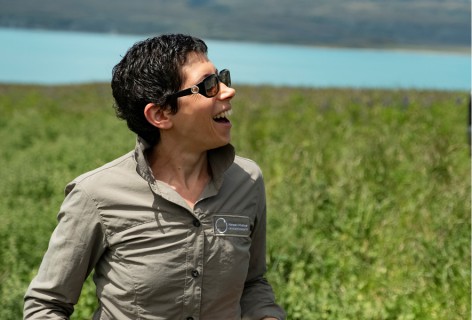Wasp biocontrol update 11
In this section
When Sphecophaga larvae pupate, they can go on to become one of three types of cocoons: i) those which will turn into brachypterous, or short-winged, adults (aka fast-generation pupae); ii) those which will turn into fully-winged adults; and iii) those which will turn into fully winged overwintering adults. The overwintering cocoons have thick walls built to withstand up to 3-4 years in the soil.
We were hoping to be at this point in the cycle last autumn. So, what led up to this moment, why did take so much longer than expected, and what happens next?
This story has to begin with a bit about the biology of Sphecophaga.
When Sphecophaga larvae pupate, they can go on to become one of three types of cocoons: i) those which will turn into brachypterous, or short-winged, adults (aka fast-generation pupae); ii) those which will turn into fully-winged adults; and iii) those which will turn into fully winged overwintering adults. The overwintering cocoons have thick walls built to withstand up to 3-4 years in the soil.
Usually there is a mix of pupae-types produced by females. For some yet unknown reason the first lot of cocoons of our UK-sourced Sphecophaga in containment all turned out to be overwintering pupae. We suspect (but don’t know for certain) that, since it was late in summer in NZ before the imported Sphecophaga began to break their diapause, the Vespula nests we provided for them were already quite mature and producing reproductives (drones & queens) that are only around at the end of the season. This may have provided a signal to the Sphecophaga that the colony is preparing for winter and it may be time to only produce the overwintering form of pupae.
This meant that we did not have any Sphecophaga emerging at the right time to make an autumn field release. Still prior to field releases, it was our duty to demonstrate that the Sphecophaga we intend to release are free of unwanted pathogens. The choice was between waiting until spring time and testing a sample of the emerging individuals, or sacrifice a sample of pupae now, while they are still hibernating, because we can’t actually tell how many will emerge in the first year after hibernation and how many will opt for the longer option.
We decided to sacrifice a sample of pupae now, and gave a big sigh of relief when they tested free of pathogens. The next step was to apply to MPI to remove the pupae out of containment and, on Friday last week the letter we were waiting for arrived!
What’s next?
The overwintering pupae are still overwintering, and we have no way to know what proportion of them will decide to emerge this coming spring. At least, we are in position to put them in natural conditions, outside of containment, to sense the day length and any other natural cues that will signal to them it is time to wake up. We will wait to see enough wasps flying around before we attempt to wake these precious parasites up. This probably means that the spring field releases will not be as numerous as we had hoped, but that’s only a minor delay in the bigger scheme of things!
Next week Bob is heading off to Europe to collect new candidate agents as part of the new project. He will be keeping an eye for more Shpecophaga as well, to increase their genetic diversity even further. We’re wishing him a successful trip, and look forward to hearing about his adventures! Will he beat the badgers to nests this time round???
Also, Bob is now taking over all aspects of the project, including communication, so expect future chapters in this story to be told in the first person from the man himself!

![The beetle [Metoecus paradoxus]. Its larvae are parasites of wasps Image](/assets/Discover-Our-Research/Biosecurity/Invasive-invertebrates/Vespula-Wasps-in-New-Zealand/beetle_Metoecus_paradoxus__FitMaxWzE1LDE1XQ.jpg)
![The larva of the hoverfly [Volucella inanis] next to its victim – a shrivelled wasp larva Image](/assets/Discover-Our-Research/Biosecurity/Invasive-invertebrates/Vespula-Wasps-in-New-Zealand/larva_hoverfly__FitMaxWzE1LDE1XQ.jpg)
